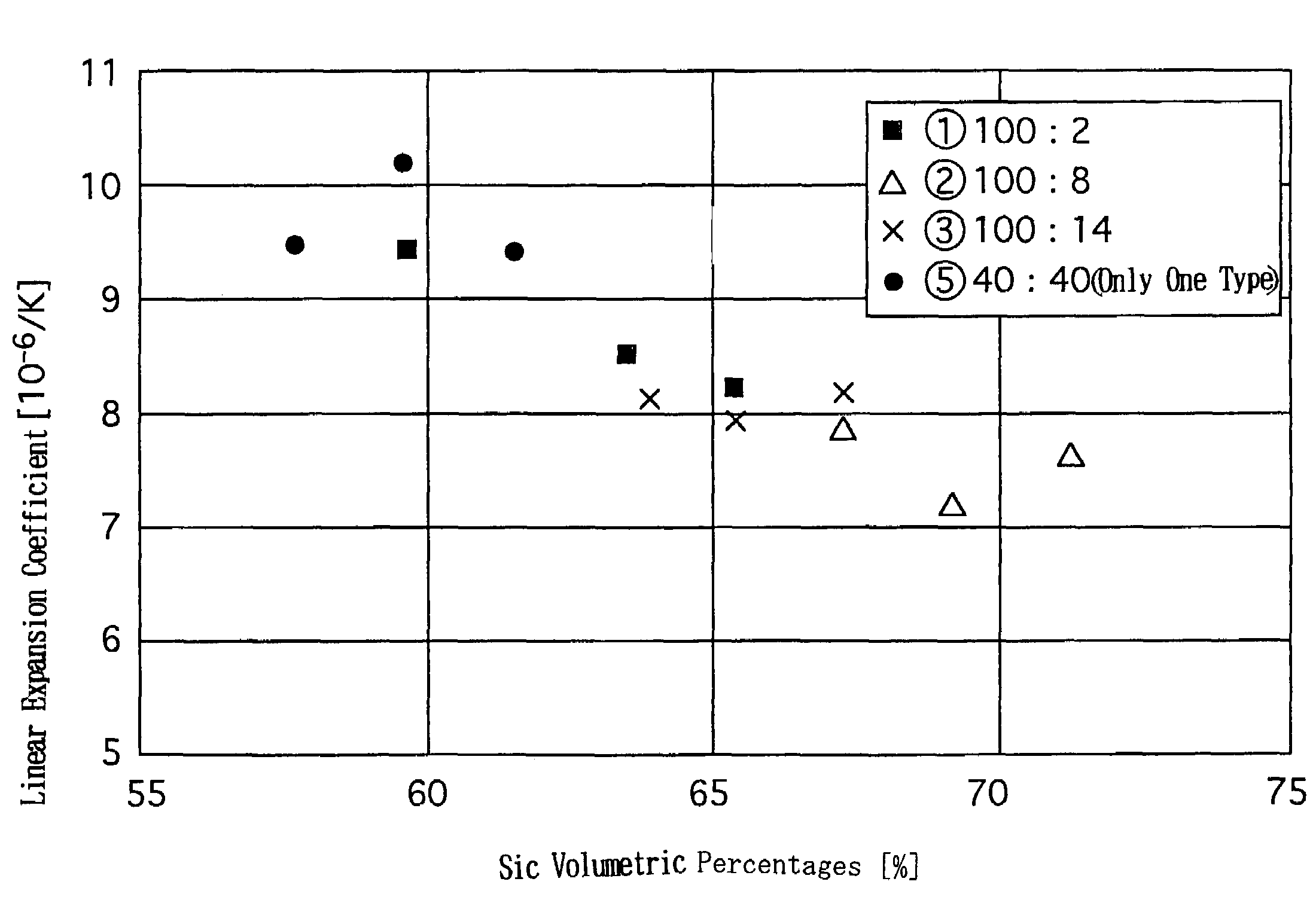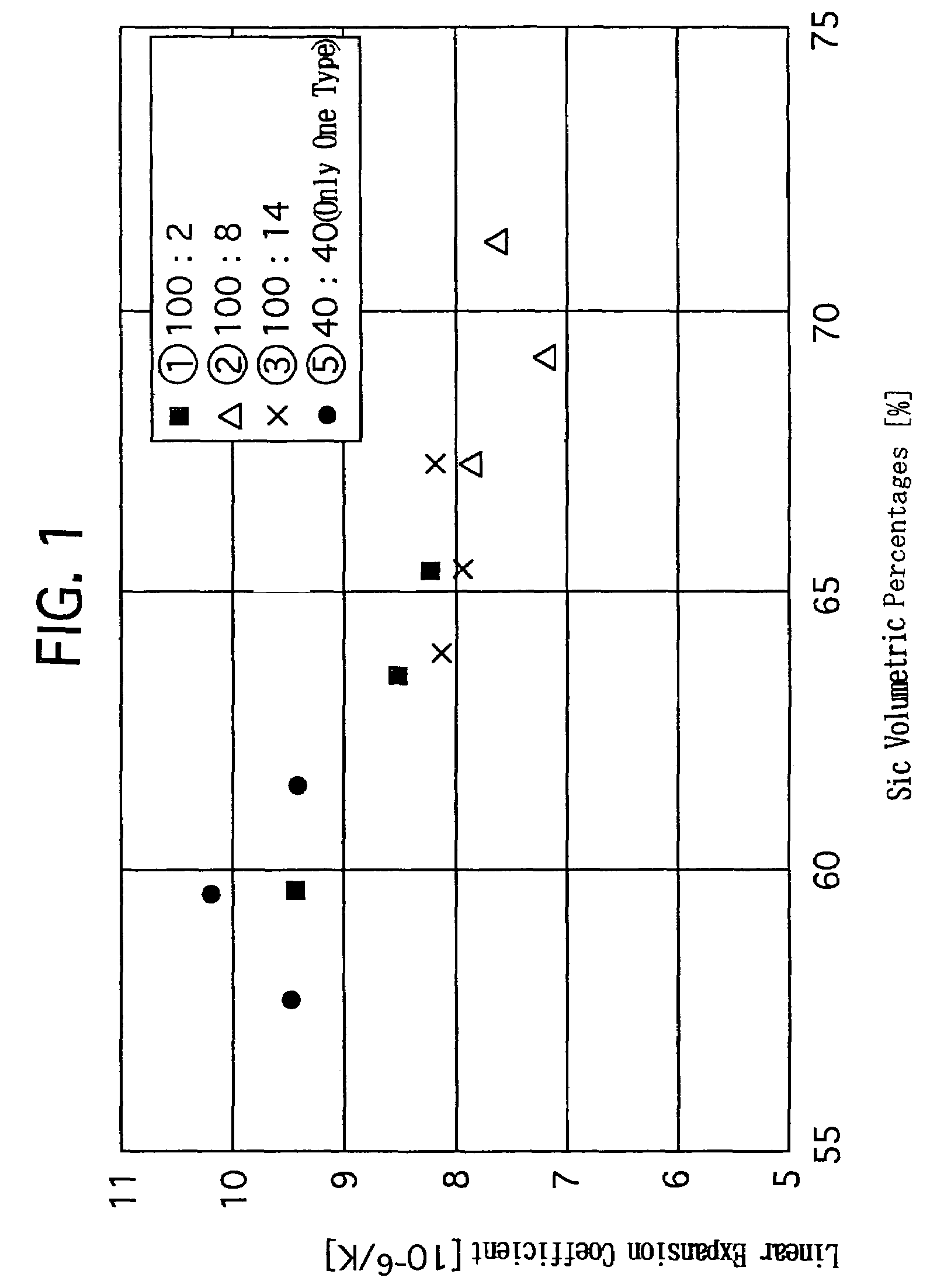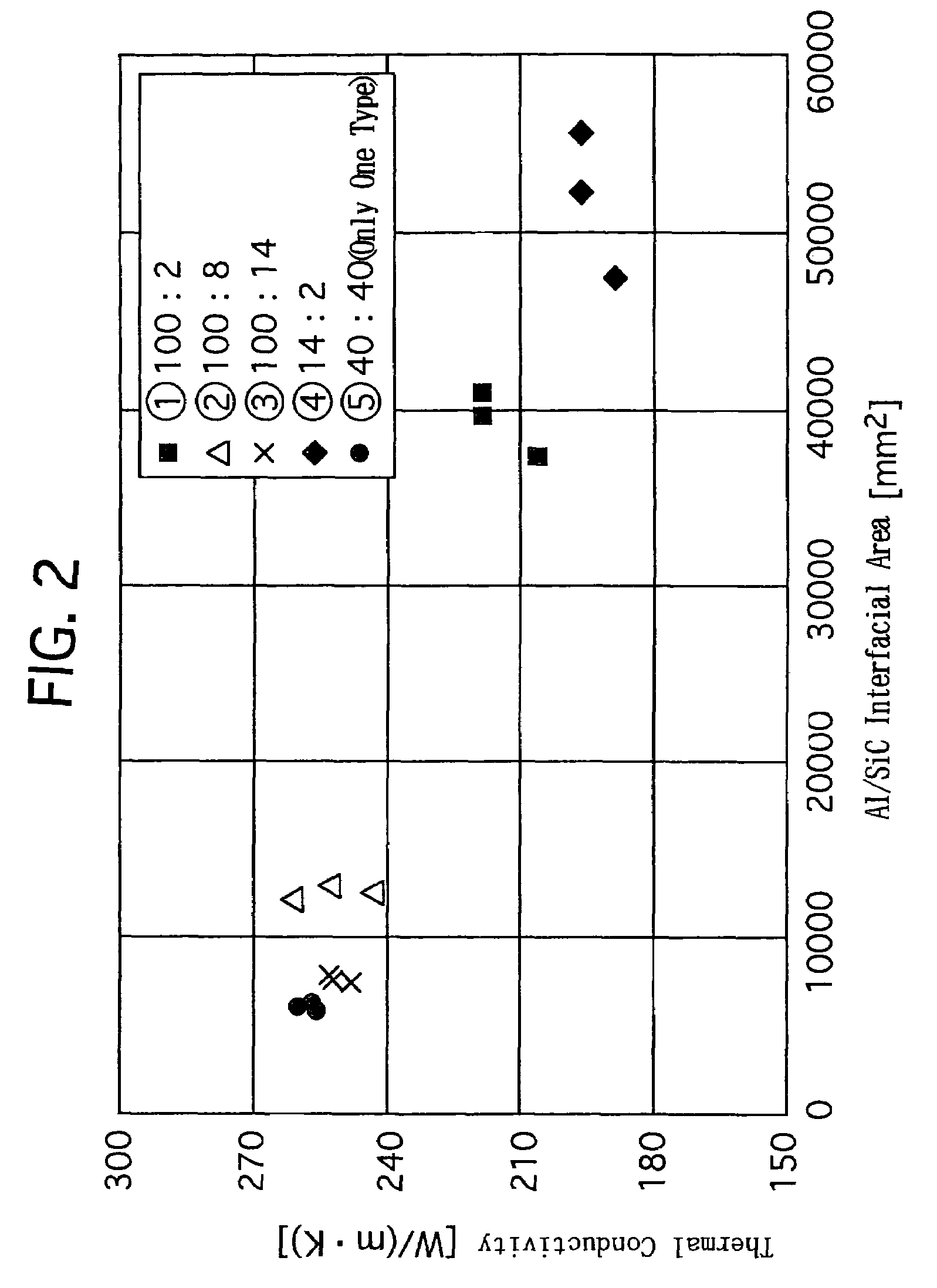Radiator member for electronic appliances and processes for producing the same
a technology of electronic appliances and radiators, which is applied in the direction of metal layered products, solid-state devices, metal-working apparatus, etc., can solve the problems of poor toughness of ceramic materials such as sic, the inability of ordinary metallic materials such as aluminum to fully satisfy both characteristics, and the inability to fully satisfy the properties of both characteristics. , to achieve the effect of reducing the number of production steps, reducing the cost and inhibiting the thermal conductivity from lowering
- Summary
- Abstract
- Description
- Claims
- Application Information
AI Technical Summary
Benefits of technology
Problems solved by technology
Method used
Image
Examples
Embodiment Construction
A. Mode for Carrying Out
[0024]Hereinafter, while naming embodiment modes, the present invention will be described more specifically.
(1) Composite Material
① SiC Particles
[0025]The composite material constituting the present radiator member for electronic appliances comprises an Al-based matrix metal, and predetermined SiC coarse particles and SiC fine particles dispersed in the Al-based matrix metal.
[0026]Here, it is suitable that the SiC coarse particles can have an average particle diameter of from 50 to 300 μm, and that the SiC fine particles can have an average particle diameter of from 5 to 30 μm.
[0027]When the average particle diameter of the SiC coarse particles is less than 50 μm, it is not preferable in view of improving the thermal conductivity because said interfacial area enlarges. When the average particle diameter exceeds 300 μm, it is difficult to process the resulting composite materials.
[0028]When the average particle diameter of the SiC fine particles is less than 5...
PUM
| Property | Measurement | Unit |
|---|---|---|
| particle diameter | aaaaa | aaaaa |
| particle diameter | aaaaa | aaaaa |
| temperature | aaaaa | aaaaa |
Abstract
Description
Claims
Application Information
 Login to View More
Login to View More - R&D
- Intellectual Property
- Life Sciences
- Materials
- Tech Scout
- Unparalleled Data Quality
- Higher Quality Content
- 60% Fewer Hallucinations
Browse by: Latest US Patents, China's latest patents, Technical Efficacy Thesaurus, Application Domain, Technology Topic, Popular Technical Reports.
© 2025 PatSnap. All rights reserved.Legal|Privacy policy|Modern Slavery Act Transparency Statement|Sitemap|About US| Contact US: help@patsnap.com



